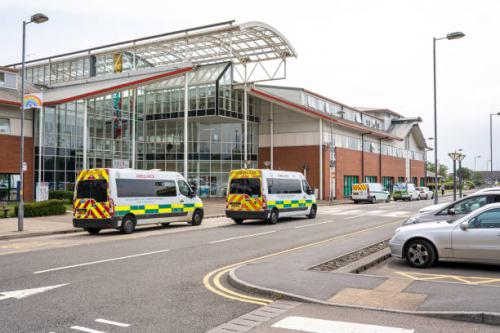We’re honoured to announce that our open-source demand model - developed in collaboration with the New Hospital Programme - has been named the 2025 winner of the Florence Nightingale Award for Excellence in Health and Care Analytics.
The award was presented by the Royal Statistical Society and the Health Foundation. It is for analytics projects that combine statistical excellence with meaningful impact for patients and communities. It is one of the highest accolades in UK health and care analytics.
The judging panel commended the model’s statistical rigour, real-world impact, and strong commitment to transparency. These are all hallmarks of the Strategy Unit’s work and ethos. This recognition places our work among the leading examples of how high-quality, open analytics can deliver real public value.
“This year’s winners exemplify the power of data to drive meaningful change in our health and care services. Their work not only demonstrates statistical excellence, but also shows how transparent, collaborative analytics can lead to better outcomes for patients and communities across the UK.”
Dr Sarah Cumbers, chief executive of the Royal Statistical Society.
Transforming planning of hospital and community services in the NHS
This model is the first nationally consistent, open-source model for forecasting future demand across hospital and community services. As such, it is essential both to new hospitals and planning for the shift to neighbourhood health required by the 10 Year Plan.
Built on over 140 million patient-level records, the model uses advanced statistical techniques to explore future scenarios and reflect real-world uncertainty, such as demographic change, rising complexity, and shifts in care delivery. With over 100 adjustable parameters, users can tailor the model to local service transformation plans, ensuring relevance and credibility in every context and enabling direct comparison between plans. The model has already been successfully deployed across 18 systems nationally and forms the basis of all new hospital plans.
The award recognises this as a step-change in practice.
The model has been adopted as a National Business Critical Model by NHS England. It supports national strategies including the NHS 10-Year Plan, Community Services Strategy, and DHSC 10-Year Infrastructure Strategy.
At local level, systems are using the model to develop their transformation plans, design services, and plan capacity with greater transparency and consistency. The model also introduces a unique, shared language for describing ‘potentially mitigable activity’, helping the NHS assess where care could be prevented or delivered differently. Any plan based on preventing demand for hospital-based care can now use our model. It will add precision and credibility.
Open source, open value
Everything we’ve built is openly available and fully documented. The model represents one of the largest open-source releases of NHS analytical code to date, with its codebase, documentation , and quality assurance fully available. There are no hidden assumptions or ‘commercial in confidence’ black boxes. Everything about our model can be examined and verified.
This commitment to openness reflects the NHP’s core values and aligns with national policies like, Data Saves Lives policy and the Goldacre Review, which advocate for transparency to drive innovation, reduce duplication, and maximise public value.
Beyond code-sharing, the model sets a new precedent for transparency in NHS analytics and is already reducing duplication and improving learning across systems.
Looking ahead
This award is a proud moment for our team and a milestone in showing what’s possible when high-quality analytics, national policy, and local practice align.
We believe the best decisions are made in the open, based on transparent analysis, grounded in evidence, and focused on improving care for patients and communities. This model is proof of that vision, and we’re excited to see how it continues to support transformation across the health and care system.

